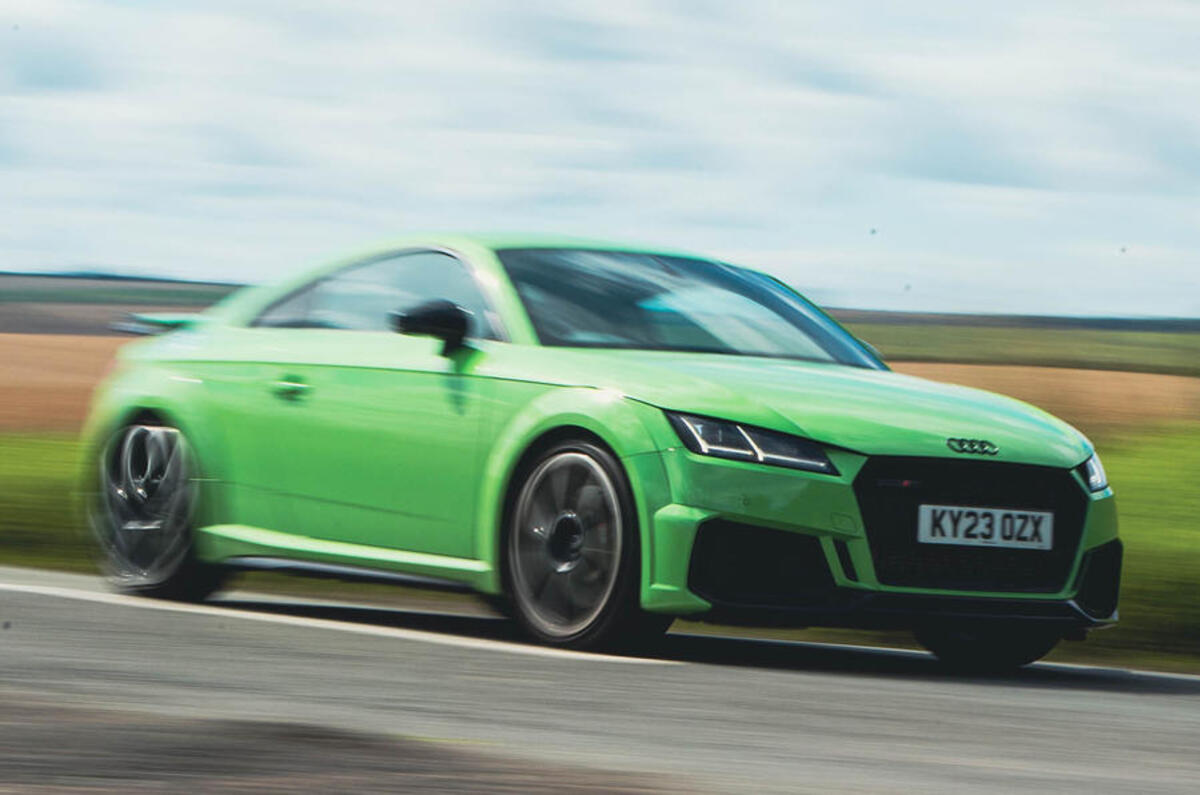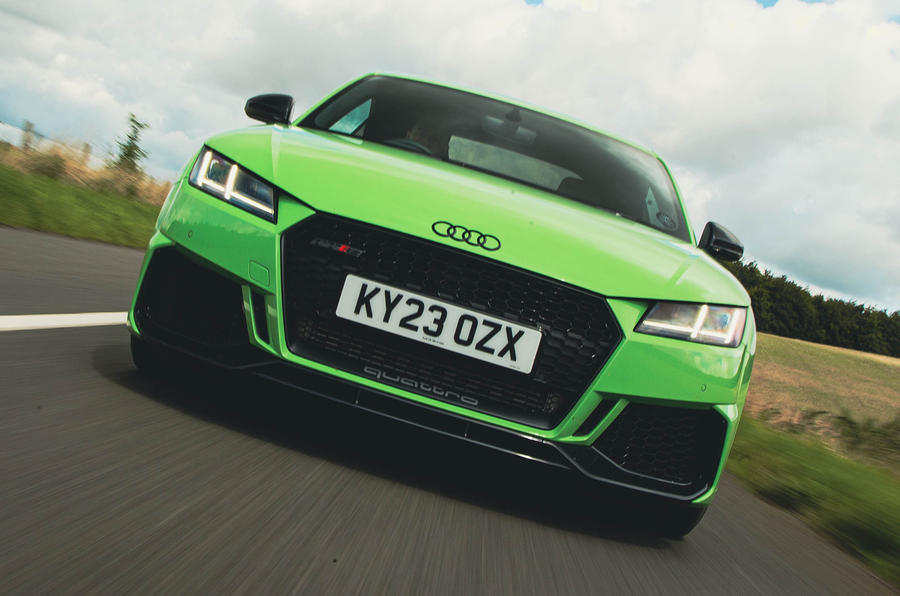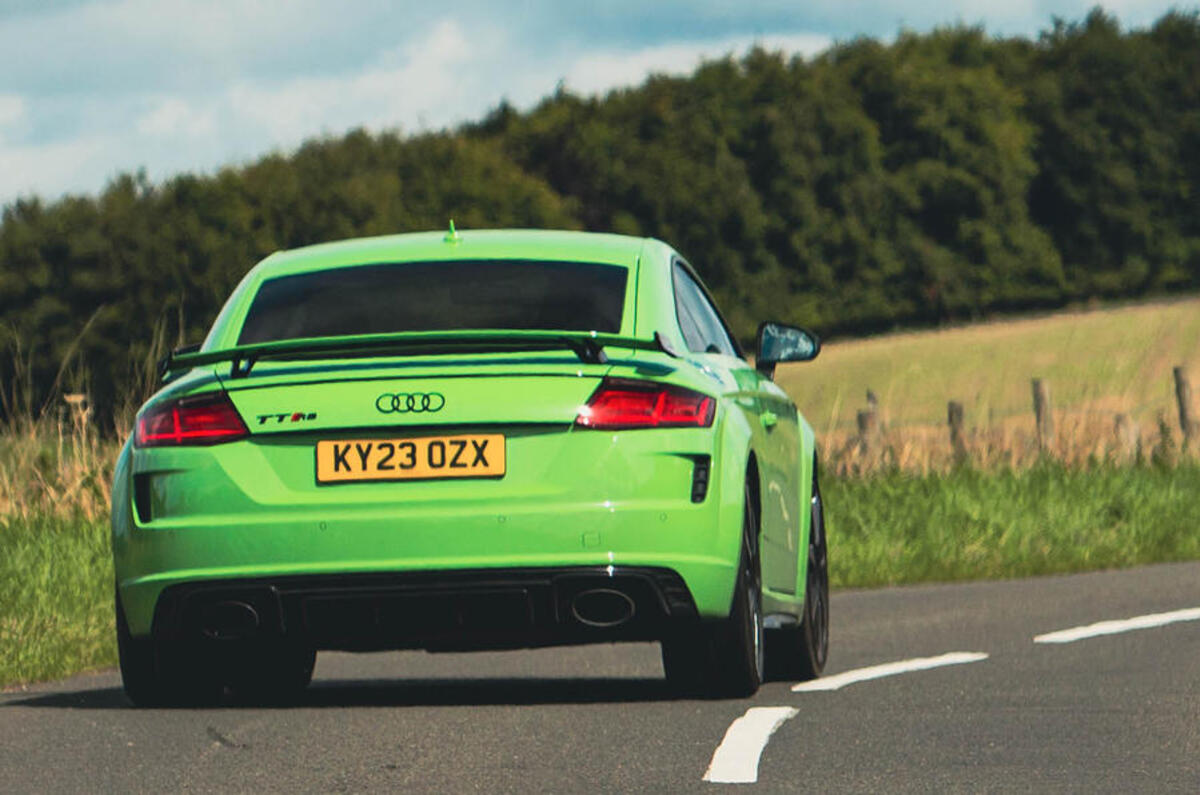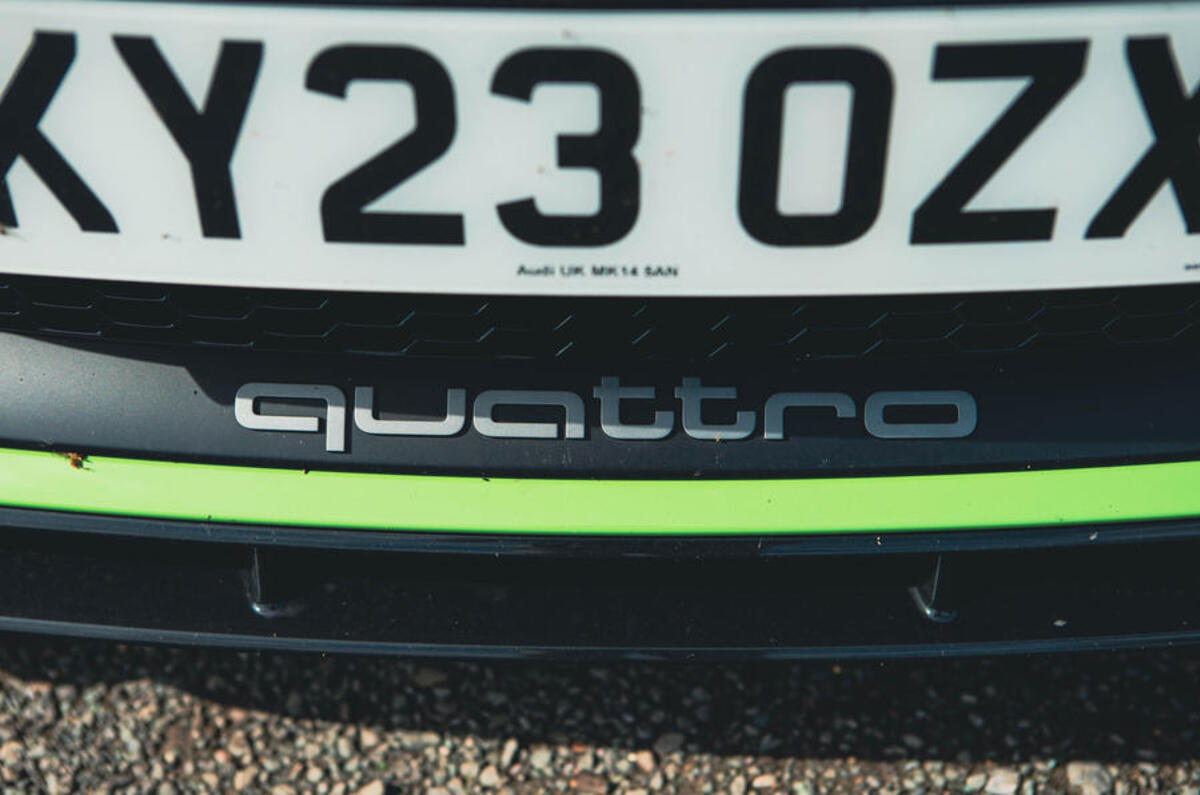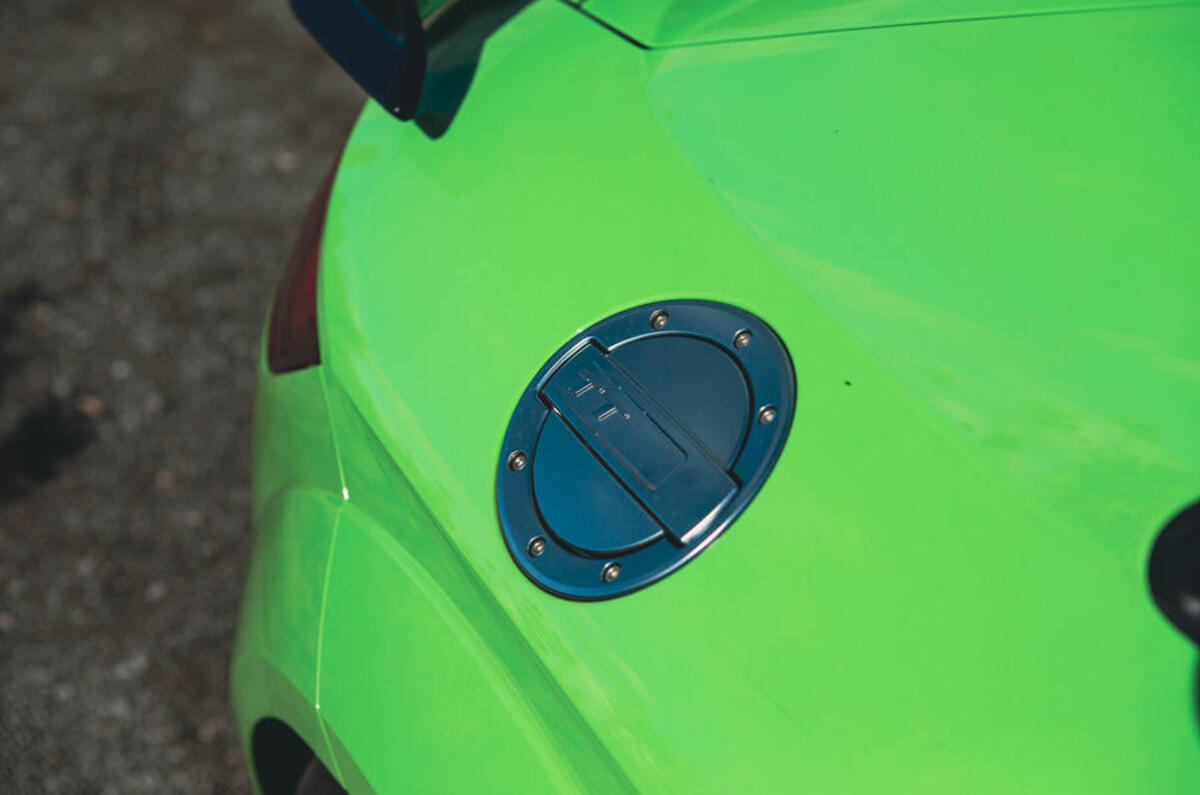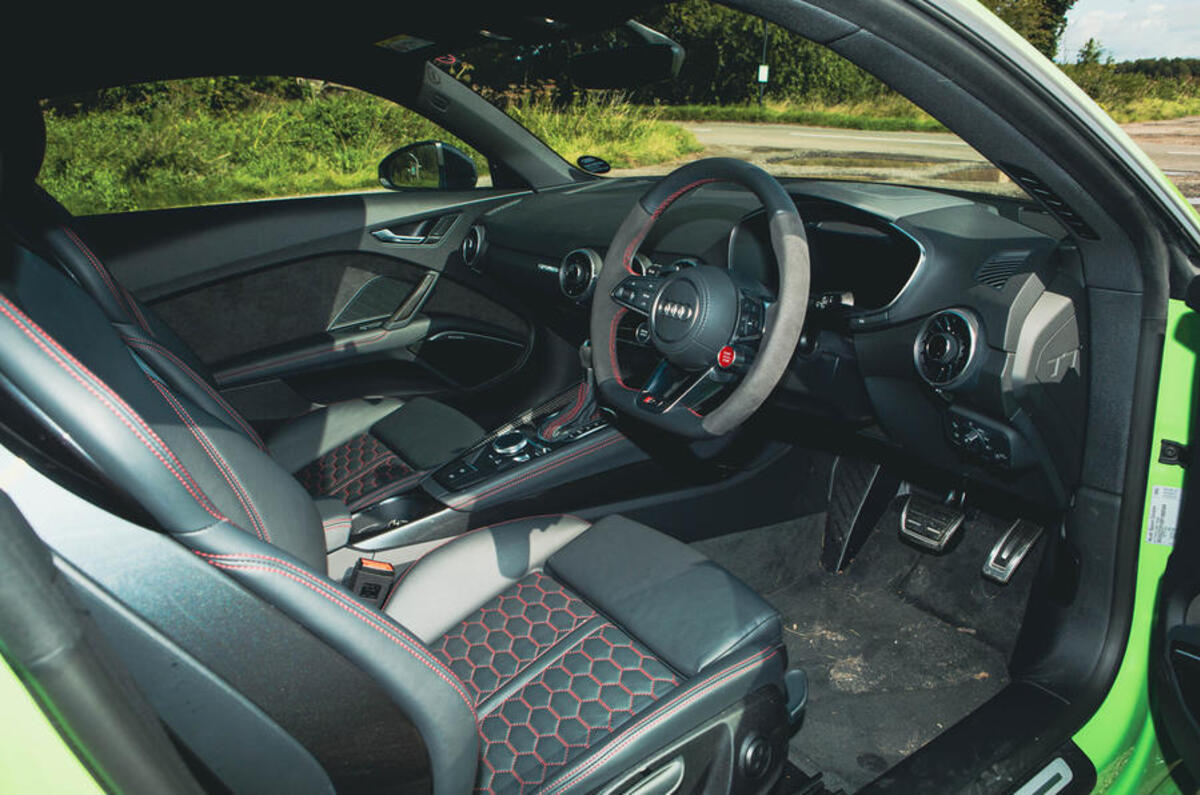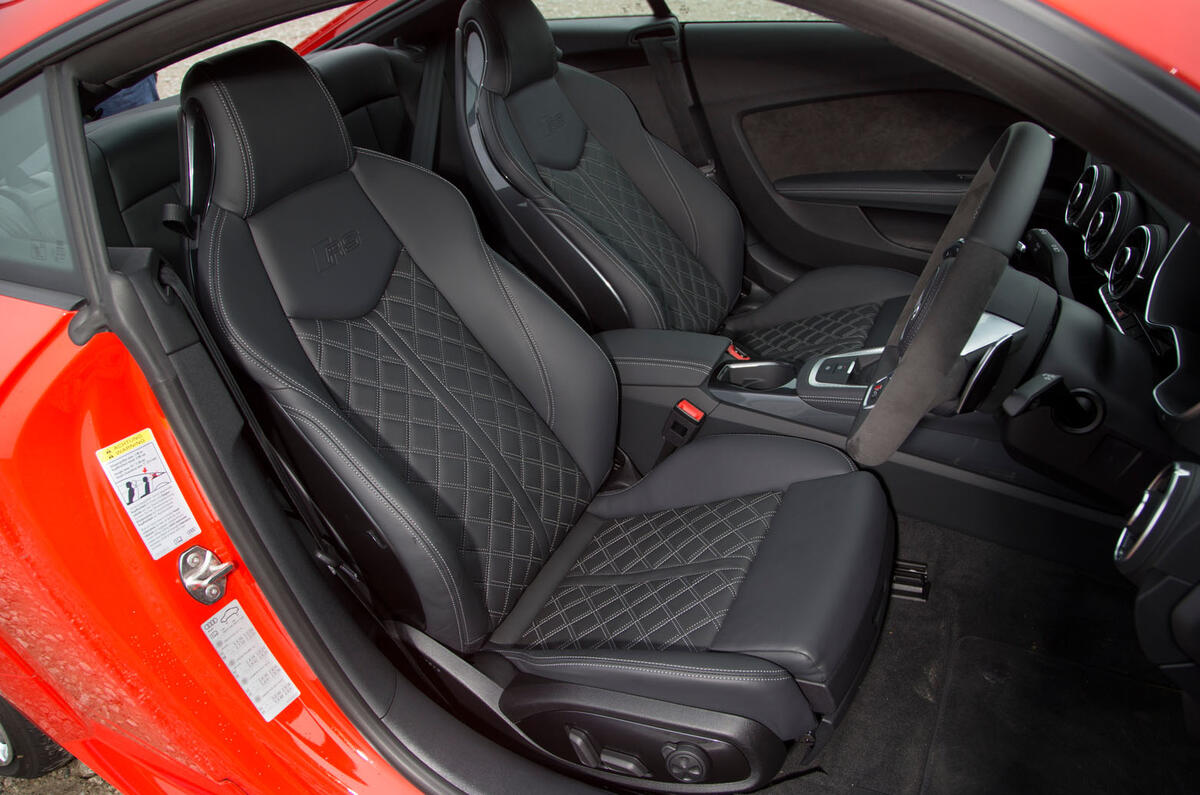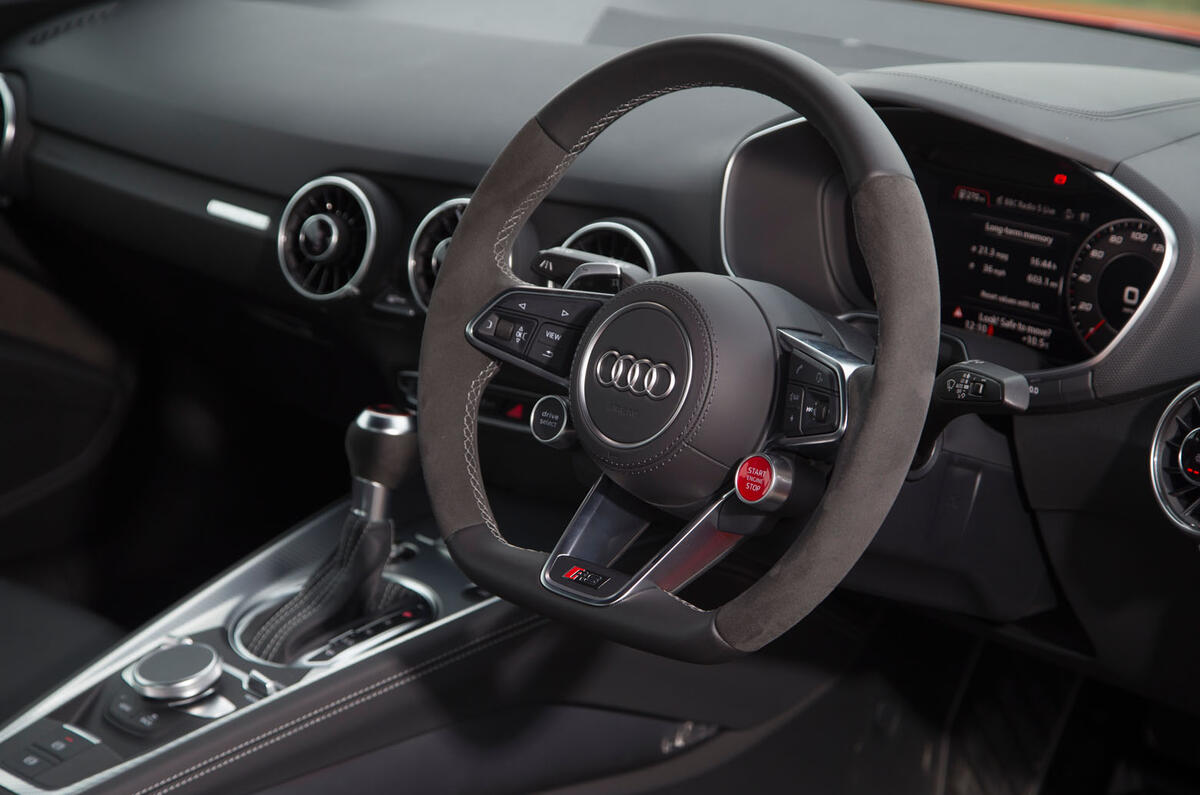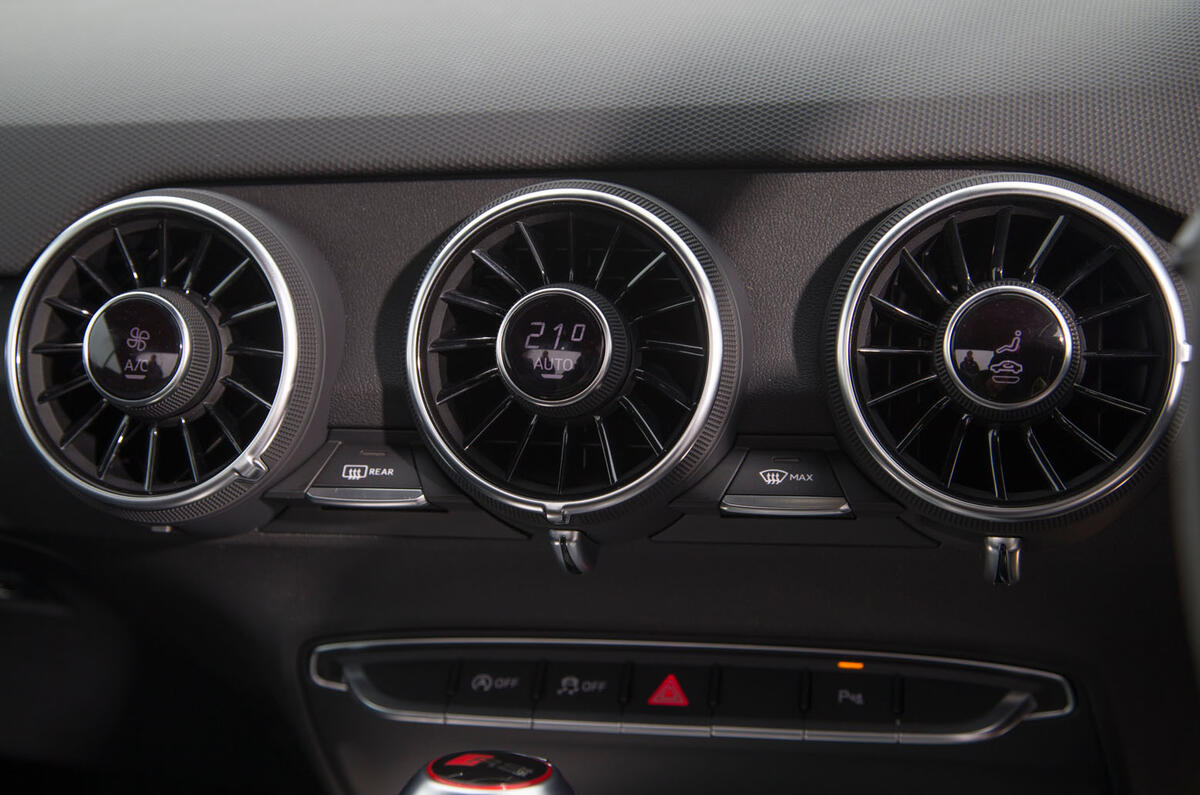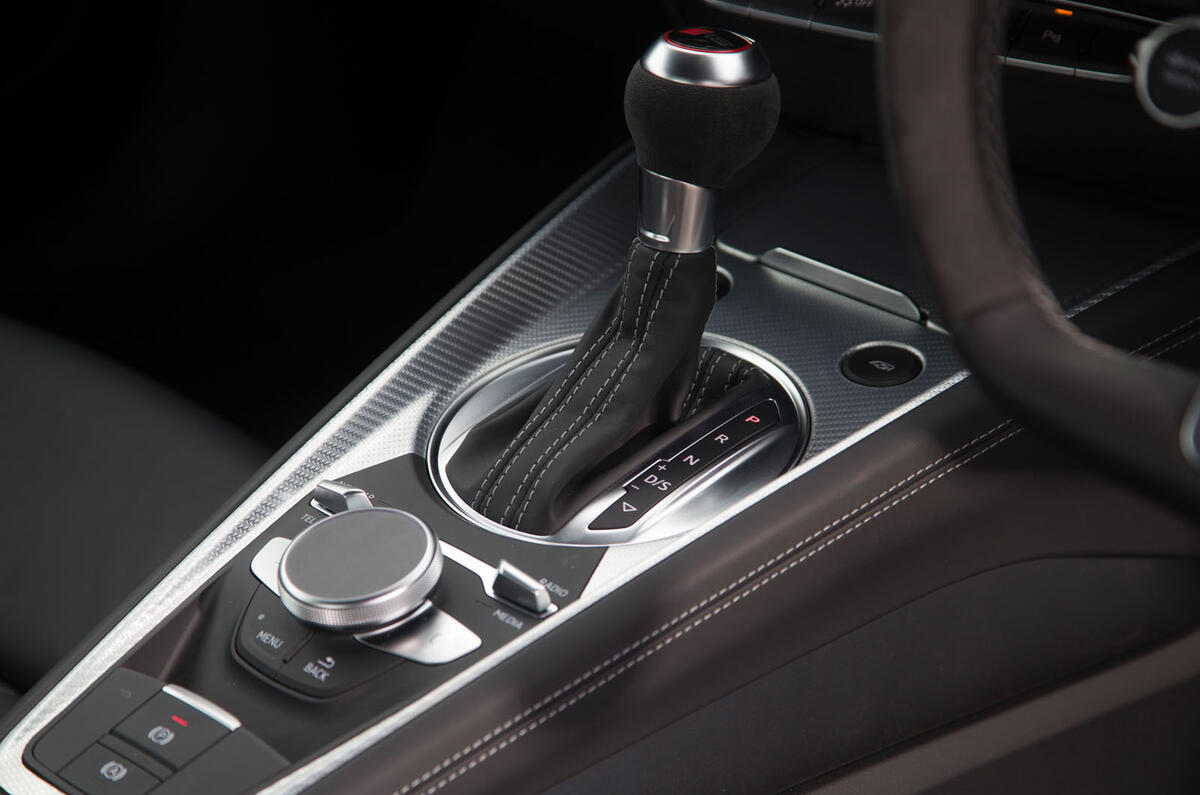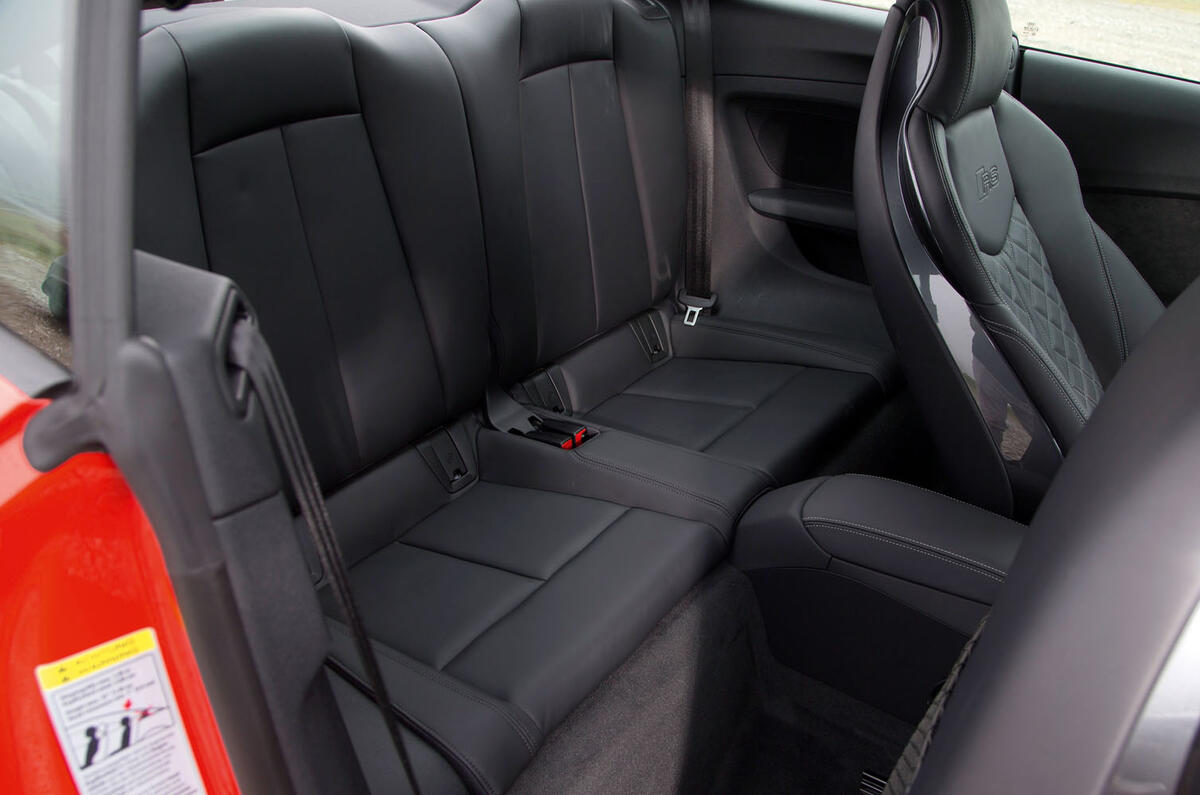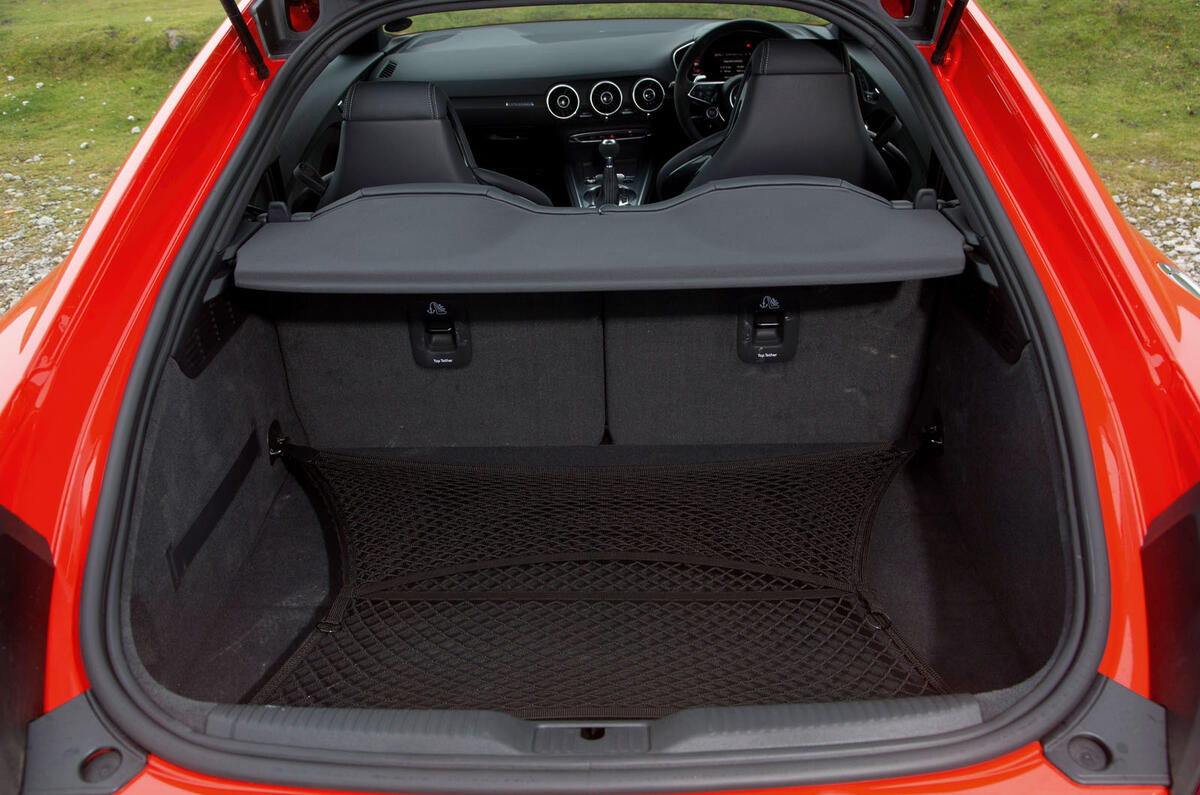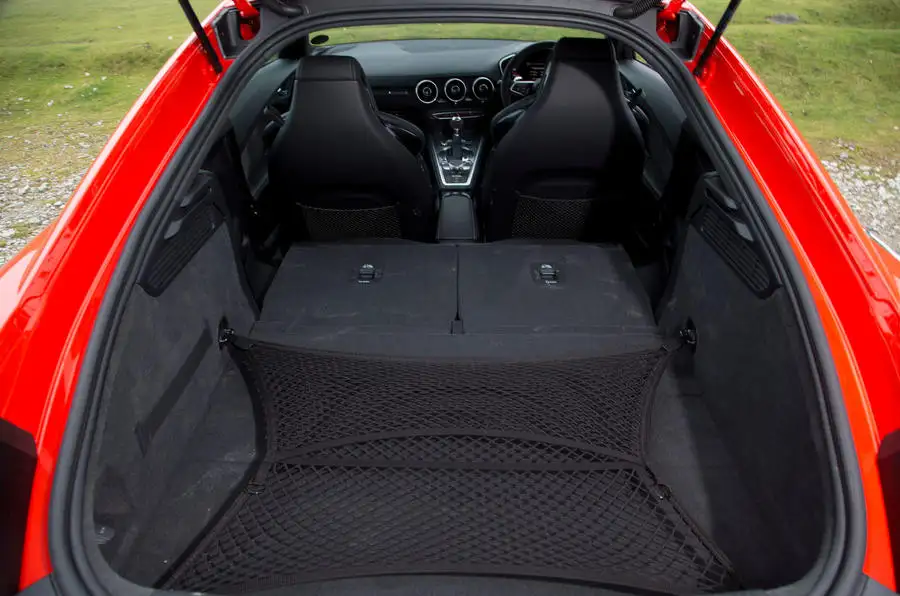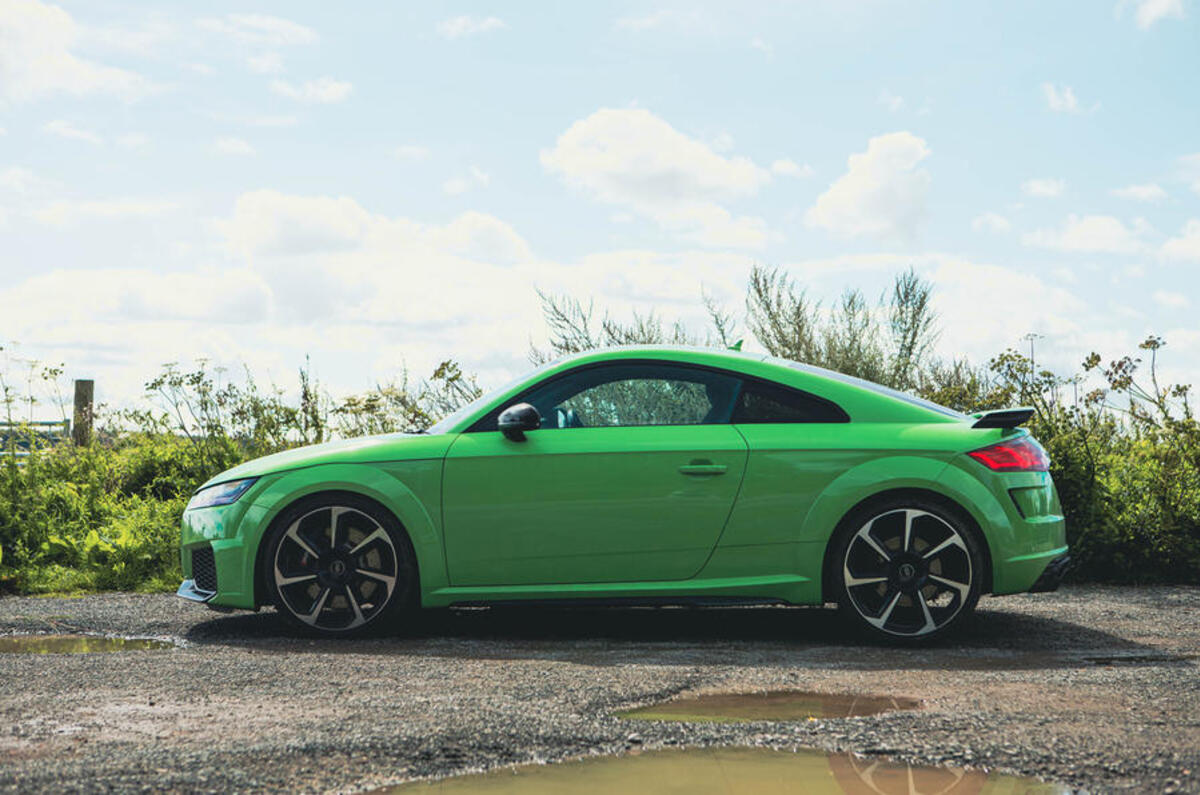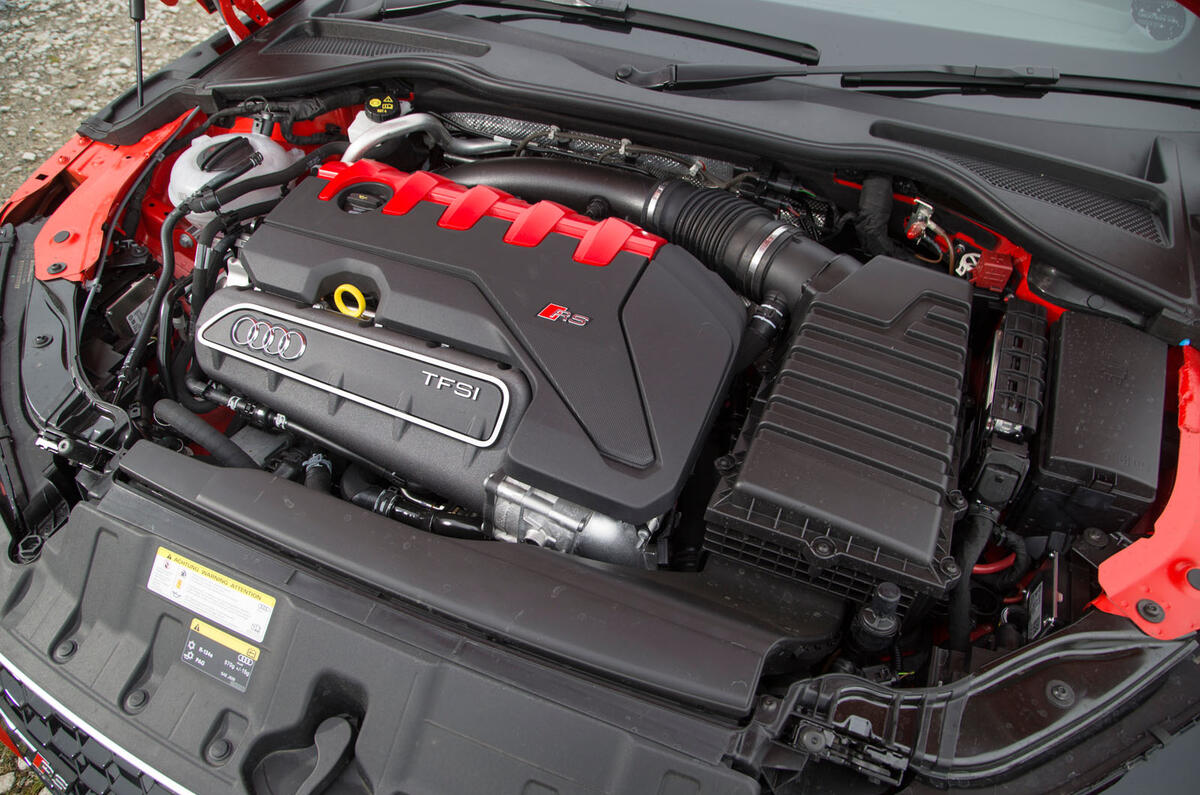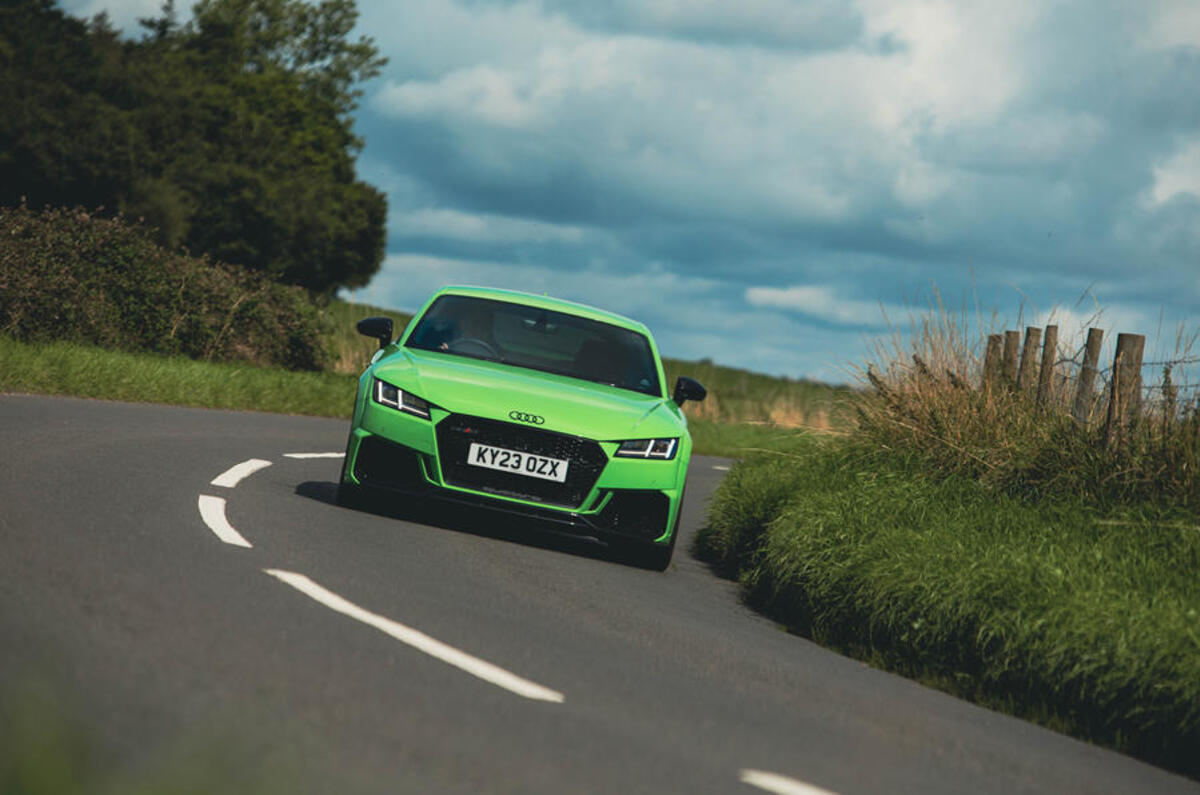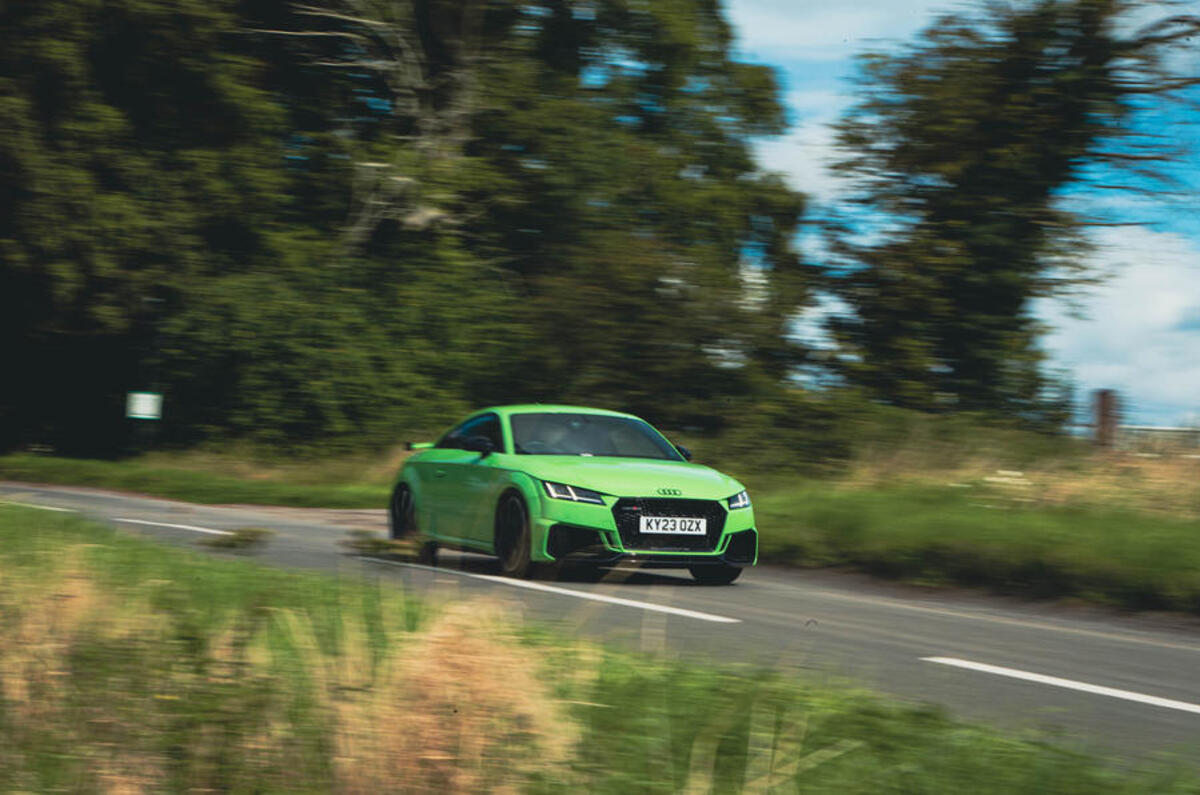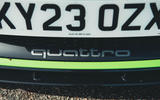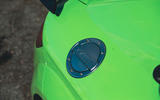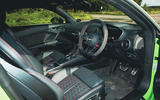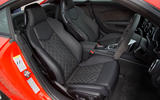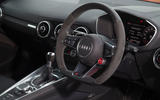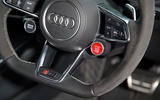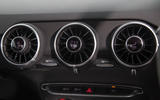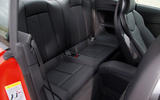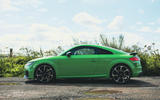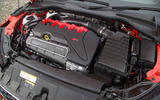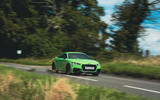We’ll start in the obvious place. A peak power output of 395bhp is a prodigious amount to extract from 2.5 litres of cubic capacity while maintaining reliability.
Almost as important to the TT RS (more so, even, when it comes to redistributing some of the car’s notoriously nose-biased mass) is the shedding of 26kg from the engine’s weight compared with the previous model, achieved with the use of a new aluminium crankcase.
The seven-speed S tronic dual-clutch automatic transmission has also been relieved of two kilograms.
And yet, despite Audi’s best efforts at moving and managing its masses, the TT RS still carries more than 60 percent of its weight over its front axle – a front-to-rear weight distribution more akin to that of a hot hatchback than a proper sports car.
The gearbox drives a multi-plate-clutch four-wheel drive system from Haldex, although this latest generation is said to bias the torque split based on which drive mode has been selected.
Like the Audi RS3, the set-up is capable of distributing 100 percent of available power to the back axle if the car deems it necessary, while torque vectoring by braking also allows the car to shuffle drive on a wheel-to-wheel basis.
The TT RS’s suspension is an evolution of the old car’s, meaning it remains sprung on front MacPherson struts and rear multi-links and is passive unless you pay extra for the adaptive magnetorheological dampers that come as part of the optional Dynamic Package.




